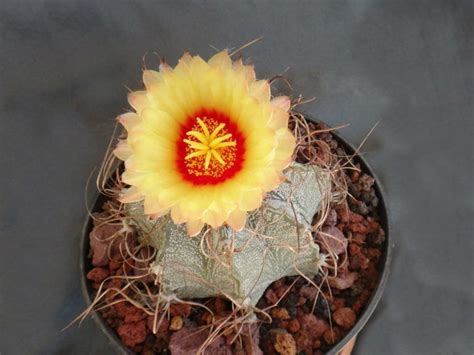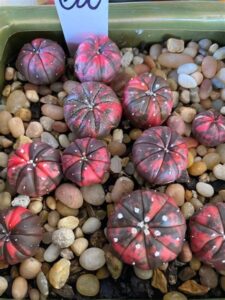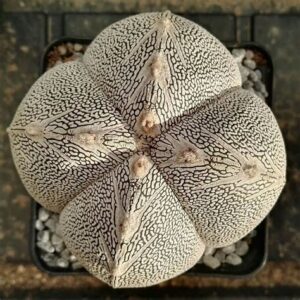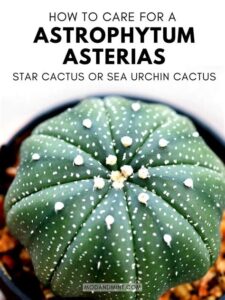The Astrophytum Capricorne, commonly known as the Goat’s Horn Cactus, is a striking succulent that exhibits a unique form and resilience, making it a favorite among both novice and seasoned cactus enthusiasts. This cactus species, native to Mexico, boasts intriguing horn-like projections that give it its name. Understanding how to cultivate and care for this distinctive plant can enhance your gardening experience and contribute to the diversity of your collection.
In the following sections, this guide will explore the requirements and best practices for successfully growing and maintaining the Goat’s Horn Cactus in a variety of environments.
Characteristics of the Goat’s Horn Cactus
The Astrophytum Capricorne is distinguished by its elongated, cylindrical shape and the characteristic horns that protrude from its surface. These projections vary in number and size, creating an interesting visual appeal. The plant typically features a greenish-grey to bluish hue, adorned with unique speckled patterns that add to its charm. Beyond aesthetics, this cactus possesses some notable adaptations. Like many succulents, its thick, fleshy tissues serve to store water, enabling it to thrive in arid conditions.
Furthermore, the Goat’s Horn Cactus can reach heights of approximately 12 to 20 inches. Its flowering season occurs in late spring to early summer, where creamy yellow or pale white flowers emerge from the top, further enhancing its allure. Understanding these core characteristics helps to appreciate the requirements for cultivation and care.
Optimal Growing Conditions
To cultivate a healthy Goat’s Horn Cactus, one must replicate its natural habitat as closely as possible. This includes factors such as temperature, light, soil type, and watering practices.
Temperature Requirements
The Goat’s Horn Cactus is well adapted to warmer climates, with a temperature preference between 70°F to 100°F during the day. However, it can tolerate temperatures as low as 50°F at night. Despite its hardiness, prolonged exposure to suboptimal conditions can hinder growth and vitality. When growing indoors, maintaining a consistent temperature is crucial, and it’s advisable to avoid placing the cactus near drafts or heating vents.
Light Needs
This cactus thrives in bright, indirect sunlight, which mimics the conditions of its native habitat. An ideal location would be a south or west-facing window where the plant can receive filtered sunlight for several hours each day. Excessive direct sunlight can scorch the surface of the cactus, so it’s important to balance light exposure. In low-light conditions, the growth may become leggy as the plant stretches toward the light source.
Soil Selection
Choosing the right soil is paramount for the Goat’s Horn Cactus’s success. A well-draining soil mix, such as a cactus potting mix, is ideal. Incorporating additional materials like perlite or pumice can enhance drainage, ensuring that excess moisture does not linger around the roots. A pH range of 6.0 to 7.0 is optimal, as it closely aligns with the plant’s natural preferences. Avoid heavy clay soils, as these can lead to root rot.
Watering Practices
Water management is crucial when tending to the Goat’s Horn Cactus. This plant is drought-resistant, and overwatering is the leading cause of its demise. During the active growing season (spring and summer), a thorough watering every two to three weeks is sufficient, allowing the soil to dry out completely between waterings. In contrast, during the dormant months of fall and winter, reduce watering to once a month or even less, depending on the humidity of the environment. Observing the plant for signs of thirst, such as wrinkling or a change in color, is essential.
Propagation of Astrophytum Capricorne
Propagating the Goat’s Horn Cactus can be a rewarding endeavor, allowing hobbyists to expand their collection or share their success with others. There are primarily two methods of propagation: offsets and seed sowing.
Offsets
Offsets, or pups, are small cacti that grow at the base of the mature plant. These can be carefully removed and repotted. The best time for this is during the growing season when the plant is most vigorous. Before replanting, allowing the cuttings to dry for a few days helps to prevent rot. Plant the offsets in a well-draining soil mix, and they will soon establish roots. Maintaining appropriate moisture levels is crucial to the success of offsets.
Seed Sowing
Alternatively, propagating through seeds is another viable method. The process begins by collecting seeds from mature flowers, which can take a year or longer to form. Once ready, sow the seeds in a cactus-specific soil mix, ensuring a gentle covering of the top layer. For optimal germination, maintaining a warm and humid environment is key. A temperature range of 70°F to 80°F is ideal. Mist the soil regularly to keep it moist but not waterlogged. Germination may take a few weeks, at which point the seedlings can be cared for similarly to mature plants.
Pest and Disease Management
Despite its hardiness, the Goat’s Horn Cactus can occasionally be susceptible to certain pests and diseases. Aphids, mealybugs, and scale insects are common culprits that may infest the plant. Regularly inspecting the cactus for signs of pests is advisable. If an infestation occurs, treating with an appropriate insecticidal soap or neem oil can effectively eliminate these unwanted visitors.
Disease issues, such as root rot or fungal infections, can arise primarily due to overwatering. Ensuring the cactus is in well-draining soil and avoiding consistent moisture can significantly reduce susceptibility to these problems. If root rot is suspected, removing the plant from the pot and inspecting the roots is necessary. Healthy roots will appear firm and white, while rotting roots will be dark and mushy. In such cases, prune away the affected areas and repot in fresh soil.
Benefits of Growing Astrophytum Capricorne
Beyond mere aesthetic appeal, the Goat’s Horn Cactus offers several benefits. Firstly, its unique appearance serves as a captivating conversation starter, making it an excellent addition to any home or office space. Additionally, cacti in general require minimal maintenance compared to traditional houseplants, making them suitable for busy lifestyles.
Beyond the visual benefits, cultivating the Goat’s Horn Cactus can also promote a sense of achievement and connection to nature. Watching it grow and thrive gives a sense of satisfaction, fostering a deeper appreciation for plant life and the environment. Furthermore, incorporating cacti into your landscaping can create drought-resistant gardens, providing ecological benefits for local wildlife and reducing water consumption.
Conclusion
The Astrophytum Capricorne, or Goat’s Horn Cactus, is an exceptional and resilient plant that can thrive with proper care and attention. Providing the right growing conditions, practicing effective propagation methods, and managing pests and diseases are key components of a successful gardening experience with this unique species. As you cultivate your Goat’s Horn Cactus, you can look forward to a rewarding journey marked by growth, beauty, and the joys of successful gardening.





Leave a Comment